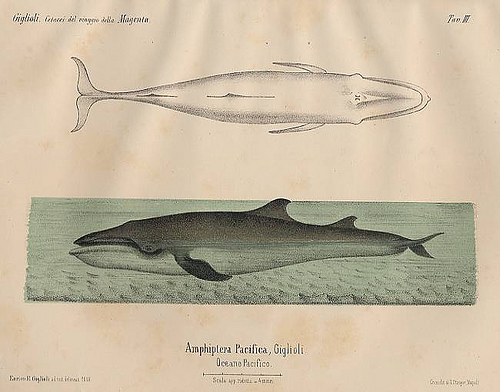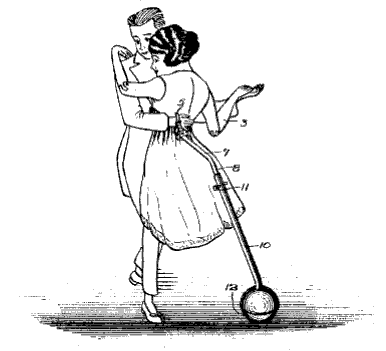In 1665, the Black Death came to Eyam in Derbyshire.
To prevent the spread of the disease, the entire village quarantined itself. In the ensuing year, its population dropped from 350 to 83.
The gravedigger survived.
In 1665, the Black Death came to Eyam in Derbyshire.
To prevent the spread of the disease, the entire village quarantined itself. In the ensuing year, its population dropped from 350 to 83.
The gravedigger survived.
Each February, the residents of Ivrea, Italy, throw oranges at each other. On the three days preceding Shrove Tuesday, thousands of costumed “revolutionaries” battle an “aristocracy” by hurling citrus fruits. Supposedly this commemorates a droit de seigneur drama in the 12th century, but in practice it’s just a bunch of people throwing oranges.
Eight hundred miles to the west, they’re throwing tomatoes.

In 1867, off the coast of Chile, zoologist Enrico Giglioli spotted a whale with two dorsal fins, a feature unheard of in any known whale.
A similar whale was spotted off Scotland in 1868, and another more than a century later near Corsica.
If “Giglioli’s whale” exists, it’s been spotted only three times, and no specimen, living or dead, and has ever been captured.
See also MacFarlane’s Bear.
aidle
v. “to earn one’s bread indifferently well”
(Charles Mackay, Lost Beauties of the English Language, 1874)
H. Hamilton, once the proprietor of Payne’s Hill, near Cobham, Surrey, advertised for a person who was willing to become a hermit in that beautiful retreat of his. The conditions were, that he was to continue in the hermitage seven years, where he should be provided with a Bible, optical glasses, a mat for his bed, a hassock for his pillow, an hour-glass for his timepiece, water for his beverage, food from the house, but never to exchange a syllable with the servant. He was to wear a camlet robe, never to cut his beard or nails, nor ever to stray beyond the limits of the grounds. If he lived there, under all these restrictions, till the end of the term, he was to receive seven hundred guineas. But on breach of any of them, or if he quitted the place any time previous to that term, the whole was to be forfeited. One person attempted it, but a three weeks’ trial cured him.
— Robert Conger Pell, Milledulcia, 1857

Bach’s name forms a musical motif. The German note B is equivalent to the English B-flat, and H indicates B natural. So if you revolve this cross counterclockwise, the note at the center takes successively the German values B (treble clef), A (tenor clef), C (alto clef), and H (treble clef).
Bach himself used the four-note motif as a subject in The Art of Fugue, and it’s appeared since in works by Schumann, Liszt, Rimsky-Korsakov, Poulenc, and Webern.

Sad and creepy, yes, but it saves money on corsages.
Sidney Feist patented this “figure for ballroom dancing practice” in 1921.
On Aug. 10, 1628, as hundreds of Swedish spectators looked on, the new royal warship Vasa crossed the Stockholm waterfront, set her sails, foundered, and sank. She had covered less than 1 nautical mile.
During the Battle of Öland in 1676, the Swedish flagship Kronan was heeling to port when commander Baron Lorentz Creutz said, “In the name of Jesus, make sure that the cannon ports are closed and the cannon made fast, so that in turning we don’t suffer the same fate as befell the Vasa.” They didn’t; they did.
Epimenides, a Cretan, says that all Cretans are liars. This seems to create a paradox: If his statement is true, then it’s false, and vice versa.
The idea recurs in Paul’s epistle to Titus: “One of themselves, even a prophet of their own, said, The Cretians are alway liars, evil beasts, slow bellies. This witness is true.”
But Aristotle, being Aristotle, sees right through the difficulty: “There is no impossibility in supposing that the man habitually lies, but that in this particular instance (in the proclamation of his own mendacity) he is telling the truth.”
“No man was ever wise by chance.” — Seneca